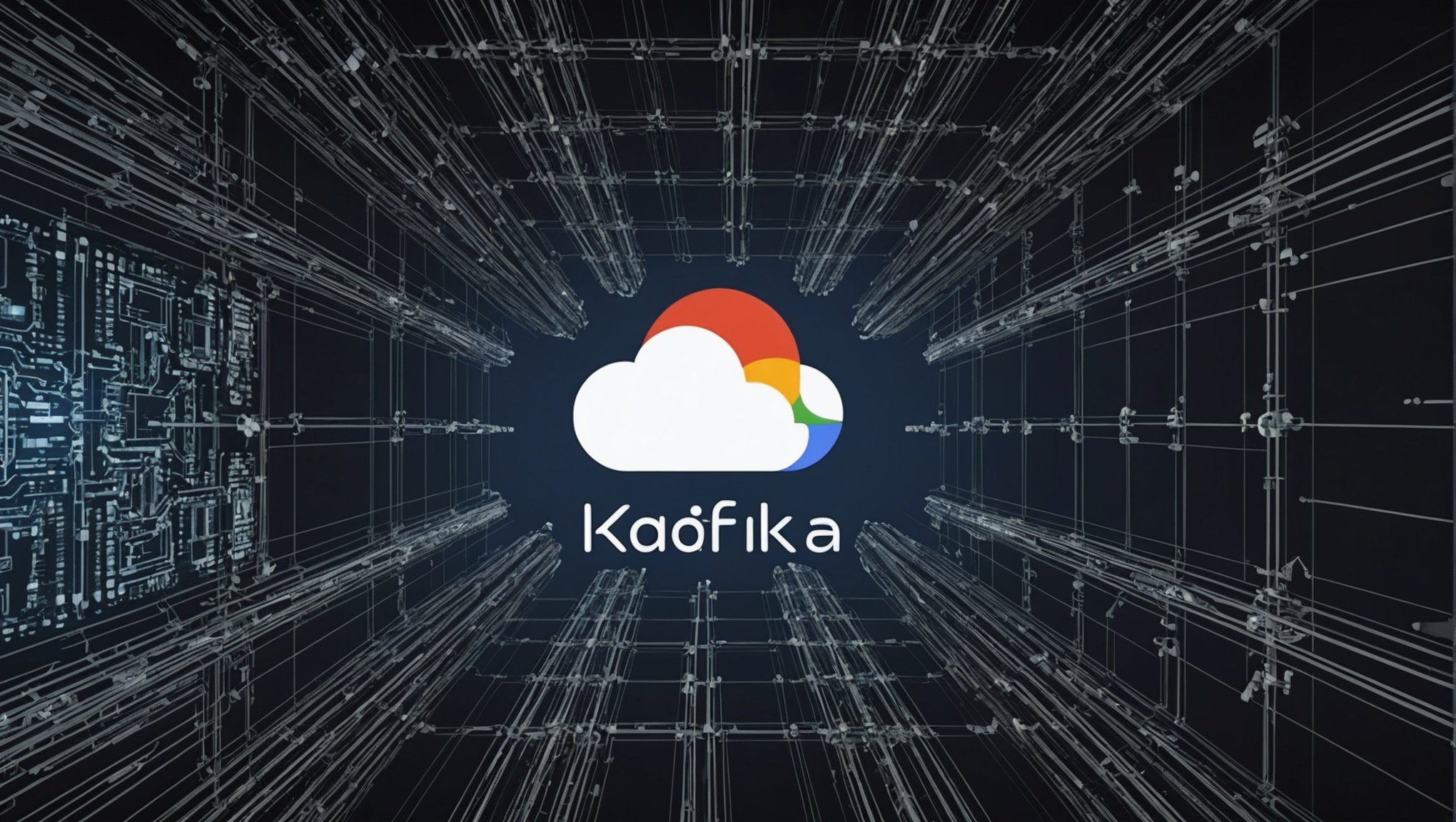As businesses increasingly rely on real-time data processing and analytics, tools like Apache Kafka have become indispensable. Kafka enables the efficient handling of large volumes of data, making it a vital asset for modern data-driven organizations. Setting up a Kafka cluster on Google Cloud Platform (GCP) combines the power of Kafka with the flexibility and scalability of the cloud. This article will guide you through the best practices for setting up a scalable Kafka cluster on GCP, ensuring optimal performance and reliability.
Understanding Apache Kafka and Its Core Components
Before diving into best practices, it’s crucial to understand the core components of Apache Kafka. Kafka is an open-source stream-processing platform designed to handle real-time data feeds. It consists of several key components:
Also read : How do you utilize Prometheus for monitoring and alerting in a microservices architecture?
- Broker: A Kafka broker is a server that stores message data and serves consumer requests.
- Topic: A Kafka topic is a logical channel to which producers send messages and from which consumers read.
- Partitions: Topics are divided into partitions for parallelism and scalability.
- Consumer Group: A collection of consumers that work together to read data from topics.
Each of these components plays a vital role in ensuring Kafka’s high throughput and low latency.
Choosing the Right Infrastructure on Google Cloud Platform
To deploy a Kafka cluster on GCP, selecting the appropriate infrastructure is essential. GCP offers a variety of services that can be leveraged to optimize your Kafka deployment.
Also to discover : How do you set up a real-time data pipeline using Apache Kafka and Apache Storm?
Compute Engine for Kafka Brokers
Google Compute Engine provides VMs that can be tailored to meet the performance needs of your Kafka brokers. Choose VM types based on your workload requirements:
- High-CPU instances for CPU-intensive tasks.
- High-Memory instances for memory-intensive operations.
- Preemptible VMs for cost-effective, non-critical workloads.
When determining the VM size, consider factors like data rate, number of partitions, and replication factor.
Storage Considerations
Reliable and high-performance storage is crucial for Kafka’s durability and fault tolerance. Persistent Disks on GCP offer:
- SSD Persistent Disks for high-performance needs.
- Standard Persistent Disks for cost-effective storage.
Ensure that your storage solution aligns with your expected data rate and throughput.
Networking Essentials
Networking is another critical aspect of setting up a Kafka cluster. Use Google’s VPC to create isolated networks for your Kafka instances. Employ Cloud Load Balancing to distribute incoming traffic evenly across your Kafka brokers.
Setting Up Your Kafka Cluster on GCP
Once you’ve chosen the right infrastructure, the next step is to set up your Kafka cluster. This involves configuring various components to ensure high availability, scalability, and performance.
Using Terraform for Infrastructure as Code
Terraform is an infrastructure-as-code tool that simplifies the deployment of cloud resources. Using Terraform, you can define your Kafka cluster configuration in code, making it easier to manage and replicate.
Here’s a basic example of a Terraform configuration for a Kafka instance:
provider "google" {
project = "your-cloud-project"
region = "us-central1"
}
resource "google_compute_instance" "kafka" {
name = "kafka-instance"
machine_type = "n1-standard-4"
zone = "us-central1-a"
boot_disk {
initialize_params {
image = "debian-9-stretch-v20200910"
}
}
network_interface {
network = "default"
access_config {
// Include this section to assign a public IP address
}
}
metadata_startup_script = <<-EOF
#!/bin/bash
apt-get update
apt-get install -y default-jdk
wget https://archive.apache.org/dist/kafka/2.6.0/kafka_2.13-2.6.0.tgz
tar -xzf kafka_2.13-2.6.0.tgz
cd kafka_2.13-2.6.0
nohup bin/zookeeper-server-start.sh config/zookeeper.properties &
nohup bin/kafka-server-start.sh config/server.properties &
EOF
}
This script automates the creation of a Kafka broker VM on GCP.
Configuring Kafka
Proper Kafka configuration is essential for achieving high performance and scalability. Key configuration parameters to consider include:
- num.partitions: Set this based on your desired parallelism.
- replication.factor: A higher replication factor improves fault tolerance.
- broker.id: Ensure unique IDs for each broker in your cluster.
- log.retention.hours: Configure log retention based on your data policy.
Additionally, use monitoring tools like Prometheus and Grafana to track cluster performance and identify bottlenecks.
Leveraging Confluent Cloud for Managed Kafka
For those who prefer a managed solution, Confluent Cloud offers a fully-managed Kafka service. Confluent Cloud handles the operational complexities of running Kafka, allowing you to focus on your data applications.
Benefits of Confluent Cloud
- Scalability: Easily scale your Kafka cluster without worrying about underlying infrastructure.
- Reliability: Confluent Cloud ensures high availability with automated failover.
- Integration: Seamlessly integrate with other Confluent services like Kafka Connect and ksqlDB.
Setting Up Confluent Cloud on GCP
Setting up Confluent Cloud on GCP is straightforward. Follow these steps:
- Create a Confluent Cloud account and select GCP as your cloud provider.
- Deploy your Kafka cluster and choose the appropriate configuration for your workload.
- Connect your applications to the Bootstrap Server provided by Confluent Cloud.
By leveraging Confluent Cloud, you can ensure a hassle-free Kafka deployment with enterprise-grade features.
Best Practices for Managing Kafka Clusters
Managing a Kafka cluster involves ensuring that it operates smoothly and efficiently. Follow these best practices to maintain a healthy Kafka cluster.
Monitoring and Alerting
Use monitoring tools like Prometheus, Grafana, and Confluent Control Center to keep an eye on key metrics like:
- Broker Health: Monitor the health of individual brokers.
- Consumer Lag: Identify lagging consumers and take corrective action.
- Disk Usage: Ensure sufficient disk space for log storage.
Set up alerts to notify your team of any anomalies or potential issues.
Security Considerations
Secure your Kafka cluster by implementing the following measures:
- Authentication: Use SSL/TLS for secure communication between brokers, producers, and consumers.
- Authorization: Implement Access Control Lists (ACLs) to restrict access to Kafka topics and resources.
- Encryption: Encrypt data at rest and in transit to protect sensitive information.
Scaling Your Kafka Cluster
Scaling a Kafka cluster involves adding or removing brokers based on your workload requirements. Follow these steps to scale your cluster:
- Add New Brokers: Introduce new brokers to the cluster and ensure they are configured correctly.
- Rebalance Partitions: Use Kafka’s rebalancing tool to distribute partitions evenly across brokers.
- Monitor Performance: Continuously monitor the performance of your scaled cluster and make adjustments as needed.
By following these best practices, you can ensure a scalable, secure, and efficient Kafka cluster on GCP.
Setting up a scalable Kafka cluster on Google Cloud Platform requires careful planning and execution. By choosing the right infrastructure, leveraging tools like Terraform, and following best practices for configuration and management, you can build a robust and reliable Kafka deployment. Whether you opt for a self-managed approach or utilize Confluent Cloud, GCP provides the necessary resources and flexibility to meet your real-time data processing needs. Follow these guidelines to harness the full potential of Apache Kafka on GCP, ensuring high performance and scalability for your data-driven applications.











